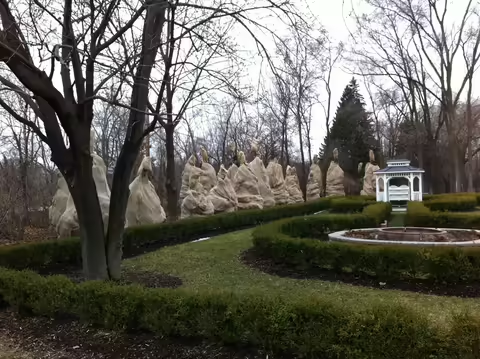URBANA, Ill. – As winter arrives, we all wonder at the temperatures we will have to endure throughout the season. Fortunately, ornamental plants begin preparing for winter early through a process called cold acclimation. The process is signaled by cooling temperatures and shorter day lengths.
Woody plants adjust to changing temperatures gradually, so that by the time the first frost hits, they are rarely damaged. However, as winter progresses, especially in harsh years, even the most well-prepared plants can suffer.
“It is usually in the spring when damage that occurred during the winter is noticed,” says Andrew Holsinger, University of Illinois Extension horticulture educator.
For example, flower and leaf buds can die because of low or fluctuating temperatures. This damage can account for a low number of blooms in the spring.
“Cold temperatures can cause a variety of symptoms,” Holsinger says. “Preparing for the worst will hopefully leave you with the best results.”
By following a few basic tips, it is possible to lessen the damage to woody ornamentals.
- Plant only varieties hardy to your area.
- Choose sites that match your plants’ requirements.
- Build your soil nutrition, as proper plant nutrition increases tolerance to cold injury.
- Avoid pruning in late summer or early fall to prevent stimulating new growth.
- Mulching can help retain moisture.
- Make sure plants are well-watered (especially evergreens) to prevent desiccation.
Burlap has become popular as a decorative component during the holiday seasons indoors. Outdoors, burlap can be used to wrap plants or provide a wind barrier to evergreen woody plants.
Other wind barriers are of benefit when placed in the right location. Generally, winter winds come from the northwest.
“Determining if your plants have been damaged by the cold sometimes takes some investigation. Buds can be opened with a sharp knife to cut a cross-section of the bud’s top. If the bud has become discolored it may have been damaged,” Holsinger says.
News source/writer: Andrew Holsinger, 217-532-3941, aholsing@illinois.edu
